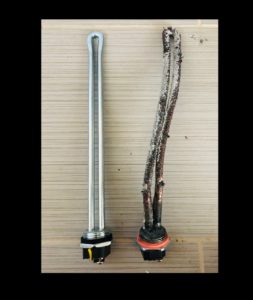
Water heaters have definite lifespans, just like other plumbing appliances. Your water heater will experience parts failure as it nears the end of its lifespan. However, some parts of the water heater might fail before others. You can replace such parts to prolong the heater’s lifespan. Below are parts of the water heater you may need to replace.
Thermocouple
Gas water heaters use a thermocouple or flame sensor to monitor and control gas supply. The thermocouple is a safety device that ensures gas only flows to the water heater when the pilot is lit. Otherwise, the gas would accumulate in the heater and endanger your household.
The pilot heats the thermocouple, converting the heat into an electrical current. The electrical current flows to the gas control valve, which has a sensor that keeps the valve open. In the absence of heat, no electricity flows to the valve, which closes to prevent gas flow.
The thermocouple might fail if something breaks it. The thermocouple can also wear out to the point where it cannot function anymore. You have to replace the thermocouple in both cases.
Heating Element
Electric water heaters use heating elements, and gas water heaters use burners to heat the water. The heating element, usually metal or ceramic, has a high resistance that generates heat whenever electricity flows through it. The heating element sits inside the tank in direct contact with the water.
The heating element can deform, break, or wear out. You must replace the water heater if it suffers damage beyond repair. For example, the heating element might suffer damage if:
- It overheats due to mineral buildup and insulation
- It experiences a voltage spike
- It experiences years of wear and tear (aging)
Diagnose the water heater and confirm that the heating element is the problem before replacing it. For example, a volt meter can be used to test the element and determine if it’s bad. Be sure to exercise extreme caution due to the risk of shock.
Thermostat
A thermostat is a temperature-controlled switch. The thermostat reads the water temperature (although it doesn’t directly touch it) and instructs the tank to start or stop heating water.
Some water heaters have two thermostats, one at the top and the other at the bottom of the tank. Dual thermostats are unnecessary in relatively large water heaters since the water temperature at the top and bottom of the tank varies considerably for such stems. Some water heaters make do with single thermostats.
Water heater thermostats typically trip (like electrical breakers) when they malfunction. The thermostats have a button you can press to reset. However, even the reset button might not work if:
- The thermostat’s electrical connection is loose
- The reset button is faulty
- Overvoltage has fried the thermostat’s electrical wiring
If the tank is close to ten years old, replacement is recommended as that is the average lifespan.
Valve
Gas water heaters use valves to control fuel flow and hence heating. The gas valve opens when the thermostat calls for heating and closes once the heater reaches the set temperature. The gas valve might be faulty if the burners cannot stay on, the pilot light button doesn’t pop, or the valve knob won’t turn.
The gas valve can malfunction due to wear and tear or mechanical damage. Gas valve repair is not advisable due to its sensitive nature. For example, a faulty gas valve might leak gas and cause an explosion. Many plumbers will advise you to replace the valve if it malfunctions.
Replace the water heater if the replacement or repair costs become too much. Spartan Plumbing Inc can evaluate your water heater to determine whether it deserves repair or replacement. Contact us for a consultation on all your water heater and general plumbing needs.
